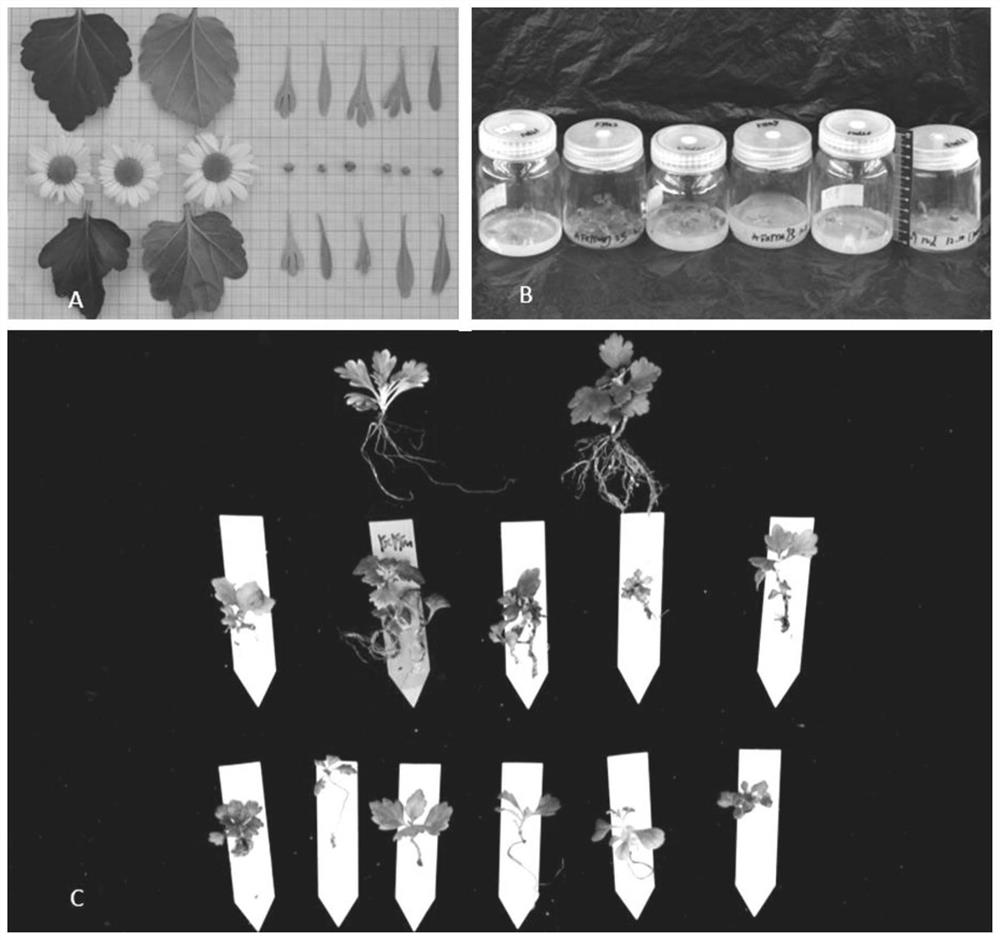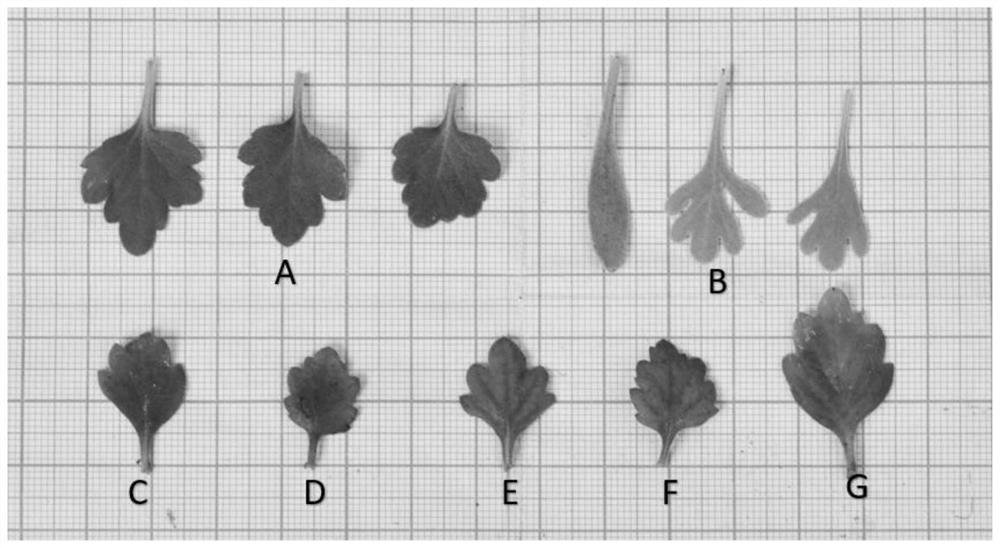Method for creating intergenus distant hybrids of Hibiscus chrysanthemum and Chrysanthemum broadleaf
A technology of distant hybrids and hibiscus chrysanthemums, applied in horticultural methods, botanical equipment and methods, plant regeneration, etc., can solve the problems of small immature embryos, difficult to peel off, and few applications
- Summary
- Abstract
- Description
- Claims
- Application Information
AI Technical Summary
Problems solved by technology
Method used
Image
Examples
Embodiment 1
[0060] The following examples are used to illustrate the present invention, but are not intended to limit the scope of the present invention. Unless otherwise specified, the technical means used in the examples are conventional means well known to those skilled in the art, and the raw materials used are all commercially available products. Example 1 Embryo rescue using young embryos of different embryonic ages to obtain intergeneric hybrid offspring of Hibiscus chrysanthemum and Chrysanthemum broadleaf
[0061] Embryo rescue of young embryos of different embryonic ages was used to obtain the intergeneric hybrid offspring of Hibiscus chinensis and Mossia broadleaf. Include the following steps:
[0062] 1. Preparation of parents: the female parent is selected from the diploid salt-tolerant wild species of Hibiscus chrysanthemum, which is a special product in my country, and the male parent is selected from the hexaploid moderately salt-tolerant wild species of Chrysanthemum chr...
Embodiment 2
[0069] Example 2 Using media with different hormone ratios for embryo culture to obtain intergeneric hybrid offspring of Hibiscus chrysanthemum and Chrysanthemum broadleaf
[0070] The intergeneric hybrid progeny of hibiscus hibiscus and mossia broadleaf were obtained by embryo culture in medium with different hormone ratios. Include the following steps:
[0071] 1. Preparation of parents: the female parent is selected from the diploid salt-tolerant wild species Hibiscus chrysanthemum, which is a special product in my country, and the male parent is selected from the hexaploid wild species Maohuahua. Both parents are planted at the Xiaotangshan Base of the National Flower Engineering Center. Adjust the flowering period of Hibiscus chrysanthemum, put it into the artificial climate chamber in August and start 8 hours of short-day curing, so that it will reach the full flowering period in mid-October; the short-day artificial climate chamber is set at 70% humidity, 25°C during th...
Embodiment 3
[0079] Example 3 Utilizing Morphological Observation and Cytology to Identify the Authenticity of Intergenus Hybrids of Hibiscus chrysanthemum and Broadleaf Chrysanthemum chinensis
[0080] Identification of the authenticity of the intergeneric hybrids of Hibiscus hibiscus and Phyllanthus broadleaf by morphological observation and cytology. Include the following steps:
[0081] 1. Identification of Hybrid Authenticity Using Morphology
[0082] 1) The hybrid parents and offspring were planted in the open field in May for routine maintenance and management. Morphological observation and statistics were carried out on hybrids and parents, including: determination of plant height, crown width, and leaf traits.
[0083] 2) Each plant randomly selects three fully expanded leaves, measures the leaf length and leaf width, and measures the length of the petiole respectively; wherein the plant height, crown width, leaf length, leaf width, and petiole length are between the parents. i...
PUM
 Login to View More
Login to View More Abstract
Description
Claims
Application Information
 Login to View More
Login to View More - R&D
- Intellectual Property
- Life Sciences
- Materials
- Tech Scout
- Unparalleled Data Quality
- Higher Quality Content
- 60% Fewer Hallucinations
Browse by: Latest US Patents, China's latest patents, Technical Efficacy Thesaurus, Application Domain, Technology Topic, Popular Technical Reports.
© 2025 PatSnap. All rights reserved.Legal|Privacy policy|Modern Slavery Act Transparency Statement|Sitemap|About US| Contact US: help@patsnap.com



